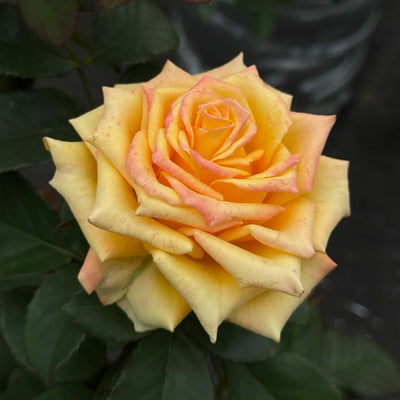Mastering the Art of Pruning Climbing Roses
Climbing roses are truly a marvel in the garden, with their vigorous growth and potential to transform walls, arches, and trellises into breathtaking floral displays. But here’s the thing—pruning them isn’t about strict rules or standard tree shapes. It’s about sculpting them into the masterpiece you envision. Let me share what I’ve learned to help you shape your climbing roses into their full blooming glory.

1. Prune for Shape, Not Just Maintenance
When it comes to climbing roses, pruning isn’t just about tidying up—it’s about building structure. Remove weak canes and focus on the strong ones. Cut out dead, aging, or heavily diseased branches. This clears the way for healthier growth and allows you to guide the plant into the shape you want. There’s no one-size-fits-all here. Your rose’s form should complement your space, whether it’s a cascading arch or a fan against a wall.
2. More Canes, More Blooms
The secret to a climbing rose exploding with flowers is having plenty of canes. Pruning sets the stage, but balance is key. Don’t over-prune or you’ll limit flowering potential. Focus on creating a framework with evenly distributed canes that all have access to sunlight.
3. Break the Terminal Bud Advantage
Roses naturally prioritize the buds at the tips of their canes, which is great if you want tall growth but not ideal if you’re after more blooms. Here’s where horizontal training comes in. By bending canes horizontally, you encourage nearly every leaf bud to develop into a flowering bud. Timing matters. The best time to horizontally train is after the leaves drop in late fall but before the plant begins to sprout in spring. Avoid training too early in autumn, as temperature fluctuations could confuse the rose, causing premature growth that risks frost damage.
4. Keep the Sunlight Flowing
Climbing roses thrive when their canes are evenly spaced, ensuring that sunlight reaches all parts of the plant. After pruning and training, take a step back and assess the distribution. Are there gaps? Are some areas overcrowded? Adjust as needed to maximize light exposure.
5. Tips for Winter Prep
If you’re in a region with harsh winters, it’s worth taking a little extra care after pruning and training. Cover the base of the plant with mulch to protect the roots and make sure those newly trained horizontal canes are secure enough to withstand strong winds.
Final Thoughts
Pruning climbing roses isn’t just a chore; it’s an art form. Every cut shapes the plant’s future, turning it into a living sculpture that bursts with color and fragrance. Take your time, visualize the shape you want, and remember: the more care you give now, the more stunning the blooms will be. Happy gardening, and may your roses always steal the show!
















































